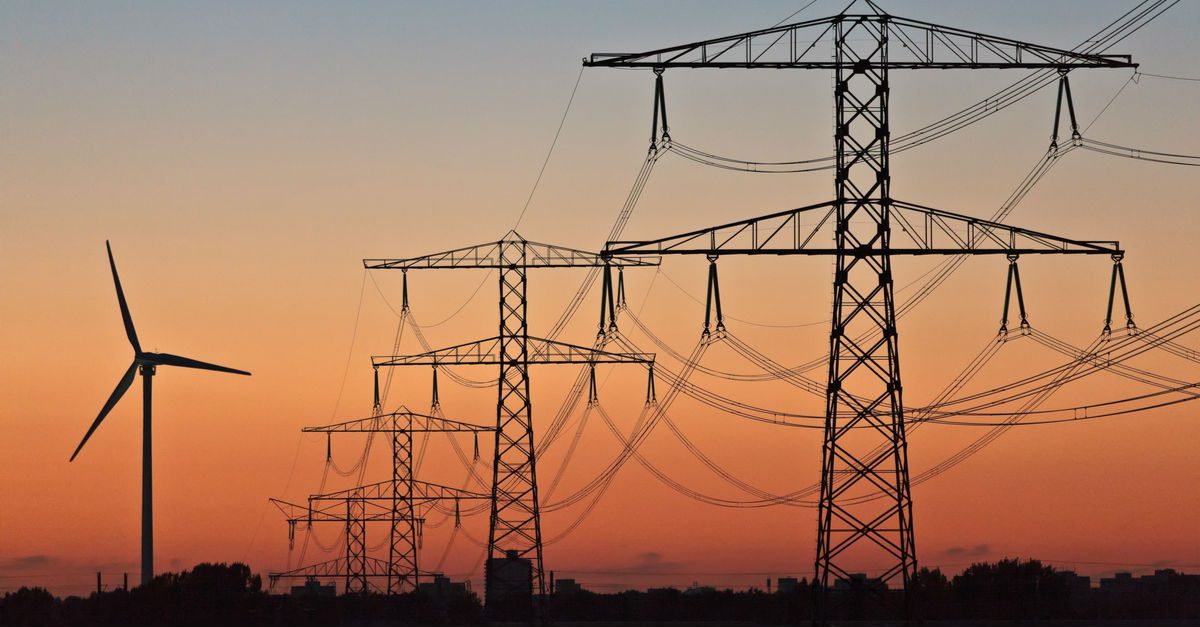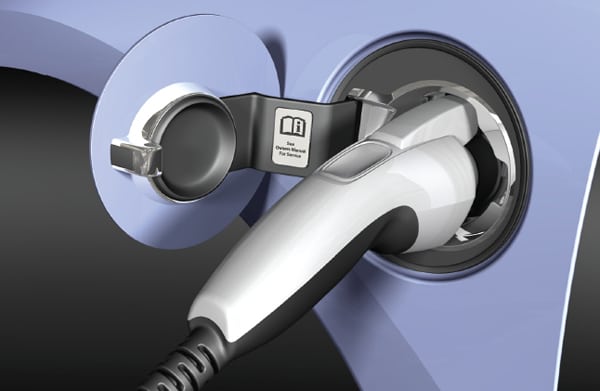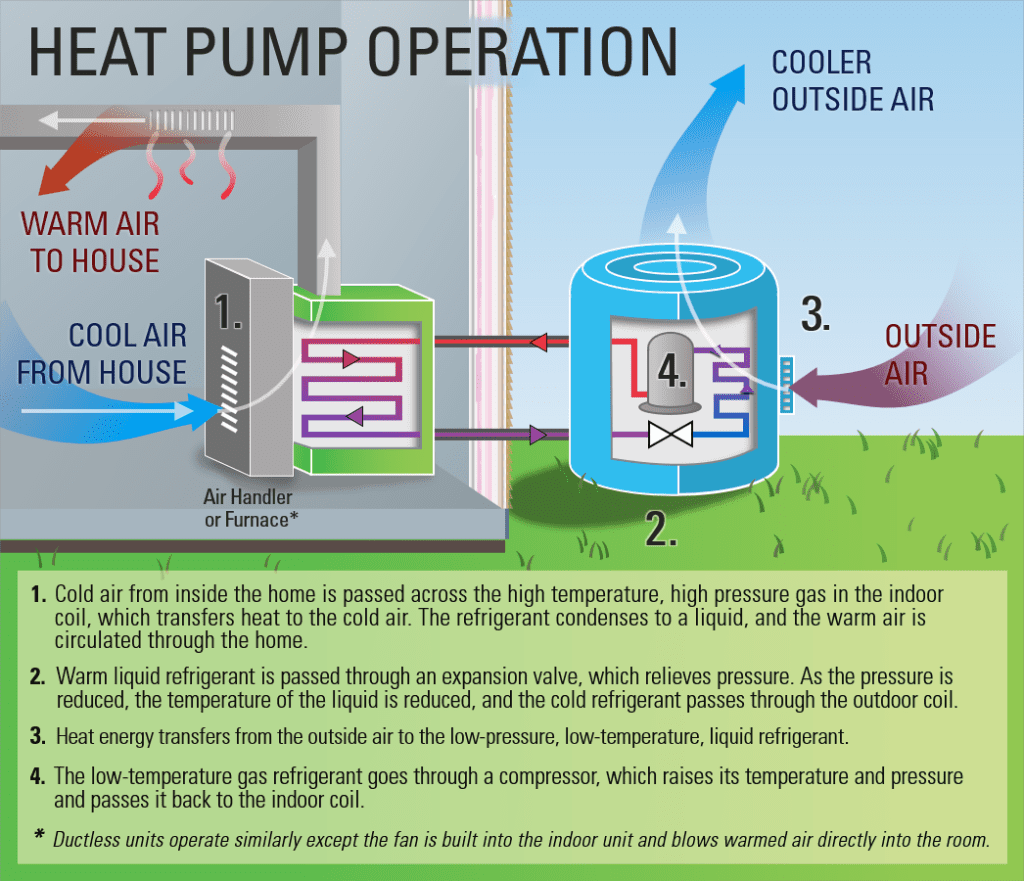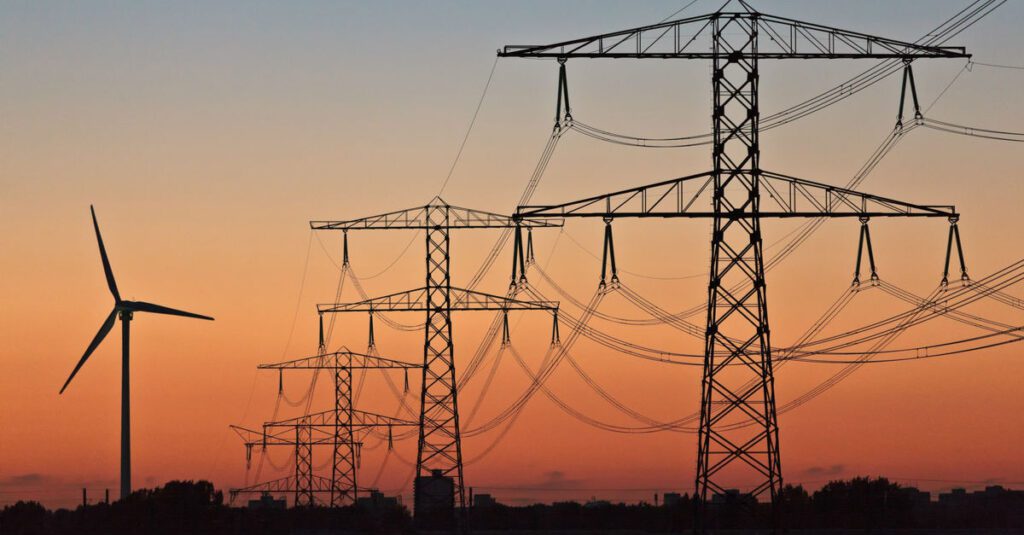The POWER Interview: Energy Experts Discuss Electrification

Electrification is changing global energy use, as entities worldwide replace technologies that use fossil fuels such as natural gas, oil, and coal, with processes that electricity as the source of energy.
Proponents of electrification tout it as a way to reduce emissions of carbon dioxide (CO2) from the industrial, transportation, building and other sectors, which account for the majority of emissions both in the U.S. and worldwide. Electrification is seen as critical to decarbonization of global economies, and also as a way to mitigate the impacts of climate changes.
Several executives of companies involved with electrification spoke with POWER about the importance of the move away from fossil fuels in the energy sector, discussing the challenges of electrifying the world, and the impact that will have on individual and business consumers of power.
Those who spoke with POWER include Nicholas Smallwood, a senior vice president at Sunrun, a California-based solar energy company. John Vernacchia, energy transition segment director for Eaton, a power management solutions group, also weighed in, along with Eric Powell, director, North America, at Partners in Performance. Powell's group is an Australia-based business management consultancy.
Curtis Tongue, co-founder and chief strategy officer at OhmConnect, a California group that works with consumers to reduce energy costs, also provided commentary. Responses have been edited for brevity and clarity.
POWER: What is the major (or best) argument for electrification?
Smallwood: Nearly 90% of all greenhouse gas emissions are energy related; 42% of those emissions come from decisions we make at home, and 29% from transportation. Electrifying homes and vehicles (Figure 1), and powering them with clean energy, can reduce emissions by over 70%. This helps transition our country away from carbon-emitting fuels and reduces our reliance on expensive, vulnerable centralized infrastructure.
 1. Electric vehicles (EVs) are among the most visible components of electrification. The transportation sector, along with power generation, is at the top of the heap when it comes to global emissions of carbon dioxide, with the growth curve for EV adoption directly tied to emissions-reduction targets. Courtesy: EPRI
1. Electric vehicles (EVs) are among the most visible components of electrification. The transportation sector, along with power generation, is at the top of the heap when it comes to global emissions of carbon dioxide, with the growth curve for EV adoption directly tied to emissions-reduction targets. Courtesy: EPRIAlso, the consequences of climate change and illness are expensive-and directly caused by natural gas emissions. Methane traps over 25 times more heat in the atmosphere than carbon dioxide in the short term, and nitrogen dioxide causes multiple health issues. For example, gas stove nitrogen dioxide emissions make children 42% more likely to experience asthmatic symptoms, and 24% more likely to suffer lifetime asthma, than those who grow up in households without gas stoves. Home electrification significantly lowers methane and nitrogen dioxide emissions, improves air quality, and helps prevent an annual 15,500 premature U.S. deaths caused by pollution.
Vernacchia: I think the most important focus should be on creating a low-carbon future, so that we can improve the quality of life and protect the environment for people everywhere. Energy consumption is steadily increasing around the world, the adoption of electric transportation is accelerating, and buildings are becoming more energy-hungry than ever before. We need to rethink energy systems to sustainably meet these new demands. To get there, the sources of power need to become more renewable, resilient and intelligent.
Tongue: The best argument for electrification is one of necessity. If we are to stave off the 1.5-degree increase in temperatures before the end of the century, we need to figure out how to effectively decarbonize the economy. About one-third of U.S. emissions come from transportation and another one-third comes from energy use in homes or buildings, so that's a good place to start. We have the tech and know-how needed to decarbonize those sectors through electrification today.
Health is another compelling argument. As long as fumes are being exhaled from tailpipes or natural gas is leaking in homes, our lungs will pay the price. A study from the American Lung Association showed that just by electrifying transport, the resulting air quality improvements could save us $72 billion annually in health costs. The national non-profit organization Rewiring America also reports that electrifying household appliances would address the 42% increased risk of children experiencing asthma symptoms associated with gas stove use.
It should be noted too that there is no sense in delay. The average appliance or car has a life cycle of about a decade, so every time someone's water heater breaks down and they just tell their contractor to buy the cheapest one they can find (currently natural gas), that appliance is going to be burning fuel for the next 10 years.
Powell: It depends on what the argument is solving for. If the argument solves for emission reduction and net zero, the question become how to offset emissions the fuel required to move and process tons of earth to extract minerals and materials for batteries and the like?" If the argument solves for consumer demand for electric vehicles (EVs), the questions become Is the arbitrage between the fuel switch subsidized or not" and is the electrical grid ready?"
If the argument solves for the reduced dependency on fossil fuels, the question becomes what about the reliability of that natural gas and nuclear provides" and what about families that depend on those jobs?" There is benefit and bias in every argument, but the best argument that benefits us all and that cuts through the bias is that electrification is the catalyst for new micro-economies that will allow everyone to participate, especially those in disadvantaged communities. In that, electrification is part of a noble purpose" in this energy transition that creates jobs, pushes the edges of innovations, and bridges societal gaps (if we let it). Anyone who has a home, a rooftop, land, or any extra space can become a virtual energy source. We should not let redlining" of policy stop it. For that very reason, we must go beyond public-private partnerships and create ecosystems of utilities, industry, customers, capital providers, regulators, and educational institutions that will enable but sustain this transition.
POWER: Is the trend toward electrification good for consumers? Some studies have shown it is less expensive to heat with natural gas, and thus home (and business) heating bills would increase. Is the economic argument valid?
Tongue: Electrification is great for consumers, particularly when you see electrification as one of the best arrows we have in our quiver to combat climate change and the economic havoc that could wreak.
In terms of operational costs, heat pumps (Figure 2) are already more efficient than their fuel-fired counterparts in warmer and humid climates. In colder climates, the energy and cost efficiency can become a little less clear cut. However, even in those regions, once you factor in both (1) lowered cost of heat pumps once they're manufactured at scale, (2) a grid transitioning to cleaner generation sources, and (3) costs saved by capping natural gas lines to buildings, like many cities are requiring for new-building codes, the electrified option is one worth pursuing.
 2. Electrification proponents tout the advantages of a heat pump, considered an enabling technology for more widespread building electrification. Source: Energy Star / Department of Energy
2. Electrification proponents tout the advantages of a heat pump, considered an enabling technology for more widespread building electrification. Source: Energy Star / Department of EnergyOne of the key challenges for homeowners is the upfront cost. Anyone that strolls down the aisle of Home Depot sees that replacing your gas furnace with a more efficient heat pump costs significantly more. Driving down that point-of-sale cost to enroll those devices in flexible grid services will be key to smoothing this transition.
Vernacchia: The real opportunity for consumers is to become producers of energy and have far greater control of when and how they use it. At Eaton, we're working to make sure that power can come from everywhere and helping our customers seize opportunities created by electrification by breaking traditional boundaries of what electrical systems can do.
Through our Everything as a Grid" approach to the energy transition, we're enabling infrastructure updates that optimize energy systems today, scale easily as things change and plan for tomorrow. We're creating energy hubs with flexible electrical systems. So, traditional energy consumers (homes, businesses, communities, and more) can generate power, store it, use it and potentially sell it back to the grid when there is excess. Also, energy consumers can have far greater control of their consumption habits and help ensure that the power is always on when they need it. Renewables and energy storage are central to that.
Powell: Giving consumers options to choices for fuel diversity, resiliency, or arbitrage opportunities are almost always good. The cost benefit of natural gas depends on many factors. Sure, more often than not, natural gas is less expensive in long run, although the upfront cost of electric connections is usually less.
As of note, the battle between natural gas and electricity is not a new one. For decades, utilities have marketed the benefit of gas versus electric for appliance or end-uses (furnaces, water heater, cooking, and even lighting). In this electrification transition, the battle between natural gas and electricity does not continue. To my knowledge, there are no natural-gas-powered Teslas in homes. Adding a plug for an EV does not displace natural gas end-uses. EVs are just another end-use, just like washer/dryers, big screen TVs, and LED bulbs. With that, I would expect little to no demand destruction to occur in local natural gas distribution, while demand destruction would have an impact on customer bills. If the next part of the economic argument is that electrification would increase (a customer's) heating bill, that may not be completely valid.
Smallwood: We would be interested in seeing these studies. Rewiring America's study shows that 85% of U.S. households-roughly 103 million homes- could collectively save $37.3 billion/year on energy bills with electric furnaces and water heaters ... 44% of those households are of low-to-moderate income, and would save an average of $377-$493/year. On average, households will save nearly $2,000 each year once they electrify.
Installing rooftop solar also unlocks cost benefits for homes using electric appliances. Additionally, electrifying our economy can create 7.7 million good-paying local jobs.
Decarbonization technologies get exponentially cheaper each year, and prices will continue to fall if we commit to a renewable energy future. Key changes to building codes, regulations, financing, and the electricity market can make converting to an electric home accessible for all Americans.
POWER: Some energy analysts have expressed concerns about the impact of increased electrification (and greater demand for power) on the power grid. Should utilities and others be concerned about the greater demand on the already stressed transmission and distribution infrastructure?
Powell: Yes and no. No, they should not be concerned, if they are just managing load growth in their normal course of business. Utilities have been planning for growth and should have little concern. Yes, they should be concerned, if the demand growth for line power is faster than their planning and execution cycles. (e.g., the West Texas oil patch). Yes, they should be concerned, if the requirement to power this electrification with all renewable sources. Then the questions become:
- Have the grid hardening / voltage optimization investments been made, particularly in electric distribution?
- Who pays for it?
- Who is the natural owner of EV infrastructure (substation, charging station, battery, etc)?
- Are we nimble enough to develop and build BTM (smaller and shorter cycle projects with dual flow interconnects and power buy-back options).
If the answer is either no," I don't know,"or not us," then:
- Yes, utilities should be concerned about their model being disrupted in forms of demand destruction via prosumers. Now, overlaying demand destruction on increased or misplaced capital spending can yield increased customer rates and bills in a significant way.
- Yes, the public needs to understand there is a limitation of how much solar and wind can be placed onto the grid. Combining the lack of grid investment, the lack of available land, and the lack of energy innovation (fuels and storage), renewables have and will have a peak, just like oil and other finite natural resources.
Tongue: McKinsey estimated that the U.S. would need to increase our electricity generation 40% to hit net-zero by 2035. This will undoubtedly present us with challenges on how to operate the grid efficiently and reliably (Figure 3). A key way for the grid to cope with this surge is to supercharge its flexibility. Homes and buildings that can pull electricity load into the afternoon, when the sun is shining, will help alleviate some of that strain.
 3. Moving away from the use of fossil fuels to generate power is at the core of electrification. Renewable energy is a core component. Source: International Renewable Energy Agency
3. Moving away from the use of fossil fuels to generate power is at the core of electrification. Renewable energy is a core component. Source: International Renewable Energy AgencyThis is an example of where the lowly heat pump water heater shines. Since water has such a high thermal mass, it can efficiently shift its electricity consumption to the afternoon when electricity is cheap and abundant, avoid using too much electricity in the evening times, and customers never notice. Through some of our modeling, a HPWH can operate somewhat like a 1- or 2-kWh battery over the course of the day. Neat stuff for such an out of sight, out of mind" appliance.
Smallwood: It's true that as more Americans electrify their homes and transition to EVs, the grid will need to provide three to four times as much electricity as it does today. Fortunately, distributed energy resources like home solar and batteries can meet this growing demand for clean energy, maximize energy savings, decarbonize electricity use, and help individuals power through power outages and grid events, and enhance grid stability. Electrified solar-powered homes will become an extension of the grid, capable of generating a third of our national energy needs.
Virtual power plants and Bring Your Own Device" programs are gaining popularity, in which utilities allow consumers with renewable energy resources to generate and share excess clean electricity with their neighbors and the grid. Since building new transmission lines and centralized power plants is expensive, a recent report found that local solar and batteries could save Americans $473 billion over the next several decades-in addition to meeting increased demand from electrification.
Vernacchia: Electrification has a cascading impact on energy infrastructure. And, it's about more than electrifying the vehicle or charging or even building systems. We see flexible load management as essential to optimize energy use at home and for the grid. So, energy consumers can squeeze the most out of renewables and storage, keeping power flowing to essential loads no matter what, and adjusting those loads as needed.
 4. Many sectors are impacted by the move toward electrification, which touches many industries and creates both challenges and opportunities. Source: Shutterstock
4. Many sectors are impacted by the move toward electrification, which touches many industries and creates both challenges and opportunities. Source: ShutterstockAnd, we're enabling utilities to create flexible energy systems through novel abilities to predict, prepare for and manage ever-changing energy systems and needs (Figure 4). Through our pioneering digital solutions and hardware, we're helping manage fragmented distribution systems to meet increasing electricity demand. For example, our grid planning software suite provides utilities new capabilities to model, predict, automate and control that are essential to operate a grid with two-way power flow. We're helping utilities the around the world digitalize, modernize, and harden the grid by enabling more informed, evidence-based decisions and smart devices at the edge-creating a grid that's flexible, better able to react instantly and adapt to changing conditions.
POWER: Are some methods of electrification-say, in the transportation sector-more critical to pursue than others?
Smallwood: All electrification is good electrification. That being said, buildings and transportation currently cause nearly three-fourths of the nation's emissions, in addition to numerous widespread health issues, as noted earlier. So we're happy to be part of the solution by helping people live in healthier homes and drive clean EVs.
Powell: The method of electrification should be weighed against other pathways like geothermal, hydrogen, LNG, and other cleantech options. All pathways should be considered and assessed. Transportation is the obvious sector to pursue, but it has limitations. With current technology, there may not a battery system that displaces current fuels like diesel, LNG, or CNG in extremely high-horsepower (HHP) vehicles economically. However, hydrogen appears to have some promise in driving HHP vehicles on the highway as well in another critical sector- primary extractors and processing raw natural resources such as mining players extracting zinc, lithium, etc., or exploration and production players extracting oil and natural gas. Electrifying vehicle fleets, rail, and other systems has significant promise and is being realized today.
Tongue: Transportation is certainly a big one. Not only does transportation contribute about a third of U.S. greenhouse gas emissions, but the cost of ownership savings of EVs to consumers is significant. A Consumer Reports study points to lower maintenance costs and 60% less lifetime fuel costs for EVs. The social and economic benefits become quite clear, particularly after price parity is achieved with the upfront cost of purchase for EVs.
This is one of the reasons that I'm excited about the Ford F-150 Lightning. The electrified version of the F150 aimed at the commercial market is already at price parity with its gasoline-fueled stablemate. It's the first time that U.S. consumers are going to have to ask themselves whether they're willing to pay more for the gas-powered version.
POWER: How much should energy efficiency be part of the electrification strategy?
Vernacchia: Here's what I think is important to recognize: the best energy is the energy you don't use. Our Everything as a Grid' strategy is creating new opportunities for efficiencies.
New policy directives are helping accelerate renewable deployments around the world. Our approach helps ensure that energy assets (EV charging, solar, energy storage, and more) work together as an integrated system to improve reliability, sustainability and cost efficiency.
We're delivering intelligent power management solutions to help our customers optimize energy use today and well into the future. For example, solutions like our smart breakers are helping homeowners both manage loads and analyze data to optimize energy use.
Electrification requires infrastructure investments. (Our group is) uniquely positioned to support electrification because of our deep expertise in energy optimization, distributing the most cost-effective and reliable power as well as vehicle electrification. We have expansive solutions and expertise for power distribution and management. There are other parts of the world further down the road of vehicle electrification, and we're applying lessons learned to help accelerate opportunities for our customers.
Powell: Energy efficiency (EE) is a vital part of the electrification strategy; it has given utilities a head-start on the journey. EE and demand-side management (DSM), and demand response (DR) programs have blazed a path for these fresh decarbonization pathways. EE, DSM, and DR collectively have mitigated sources and uses of energy for decades now. They also provide an existing model that we can use or augment to:
- Pay for new end-uses via rate, incentives, rebates, and revenue sharing.
- Engage the market in both grid-scale and behind-the-meter applications to reduce, shape, and shift demand on or off the system
- Build governance to evaluate, track, measure, and verify emission results
Smallwood: Electric appliances are generally more efficient than their gas counterparts. This lowers emissions and relieves pressure on the grid while we transition to clean, renewable, distributed energy.
Tongue: Energy efficiency can play a helpful role in reducing the overall demands on the grid. According to a recent DOE (Dept. of Energy) study, over the next two decades, national adoption of grid-interactive efficient buildings could be worth $100-$200 billion in U.S. electric power system cost savings.
But what is also becoming increasingly clear is: timing is everything. When electricity is used is just as important, if not more so, than traditional energy efficiency. Figuring out methods to ensure homes and buildings use more energy when it's cheap and abundant and avoid using energy when it's inefficient will be key.
So I think what energy efficiency" was intended to accomplish will slowly morph into energy flexibility." Load shifting, demand response, DER management, and grid-edge services are going to increasingly become keystones to our grid strategy.
-Darrell Proctor is a senior associate editor for POWER (@POWERmagazine).
The post The POWER Interview: Energy Experts Discuss Electrification appeared first on POWER Magazine.